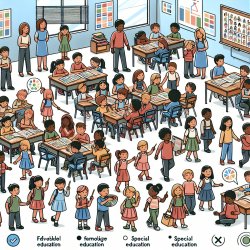Empowering Our Youngest Learners: Navigating K-3 Class Size Policies
In the realm of early childhood education, the teacher-to-student ratio and class size play pivotal roles in shaping the quality of learning experiences. Understanding these parameters is crucial for educators, parents, and policymakers alike. As a Special Education Director, I recognize the significance of these metrics in ensuring effective learning environments for our youngest learners.
The Importance of Teacher-to-Student Ratios
Teacher-to-student ratios are more than just numbers; they represent the level of individual attention each student receives. In grades K-3, where foundational skills are developed, maintaining optimal ratios is essential. At least 28 states have statutes or regulations governing these ratios, typically ranging from 1:15 to 1:25. These regulations aim to ensure that each child receives the attention and support they need during these formative years.
Class Size Maximums and Their Impact
Class size maximums complement teacher-to-student ratios by setting a cap on the number of students per classroom. For instance, in California, the average class size for kindergarten is not to exceed 31 students, with a maximum of 33. This helps maintain a conducive learning environment where teachers can effectively manage the classroom and cater to individual student needs.
State-Specific Policies: A Closer Look
- Alabama: 1:18 for grades K-3.
- Arkansas: 1:20 or 1:22 with an instructional aide for kindergarten; no more than 1:23 average for grades 1-3.
- Florida: 1:18 for grades K-3.
- Georgia: 1:15 for kindergarten; 1:17 for grades 1-3.
- New York: Not specified in statute or regulation.
These examples highlight the diversity in state policies and the varying approaches to managing class sizes and ratios. It's noteworthy that some states, like Connecticut, provide grant funding to reduce class sizes, emphasizing the importance of smaller classes for effective education.
Challenges and Opportunities
While many states have established regulations, 14 states and Washington, D.C., lack specific statutes or regulations regarding K-3 class sizes. This presents both challenges and opportunities. On one hand, it may lead to inconsistencies in educational quality. On the other hand, it offers a chance for innovative approaches to education, tailored to local needs and resources.
The Role of Funding
Funding plays a crucial role in implementing and maintaining optimal class sizes. Five states have laws dictating that available funds must be used to lower teacher-to-student ratios. This underscores the commitment to quality education and the recognition that smaller class sizes contribute to better student outcomes.
In conclusion, understanding and navigating K-3 class size policies is essential for fostering effective learning environments. As educators and leaders, we must advocate for policies that prioritize the needs of our youngest learners, ensuring they receive the attention and support necessary for their educational journey.
For more information, please follow this link.










